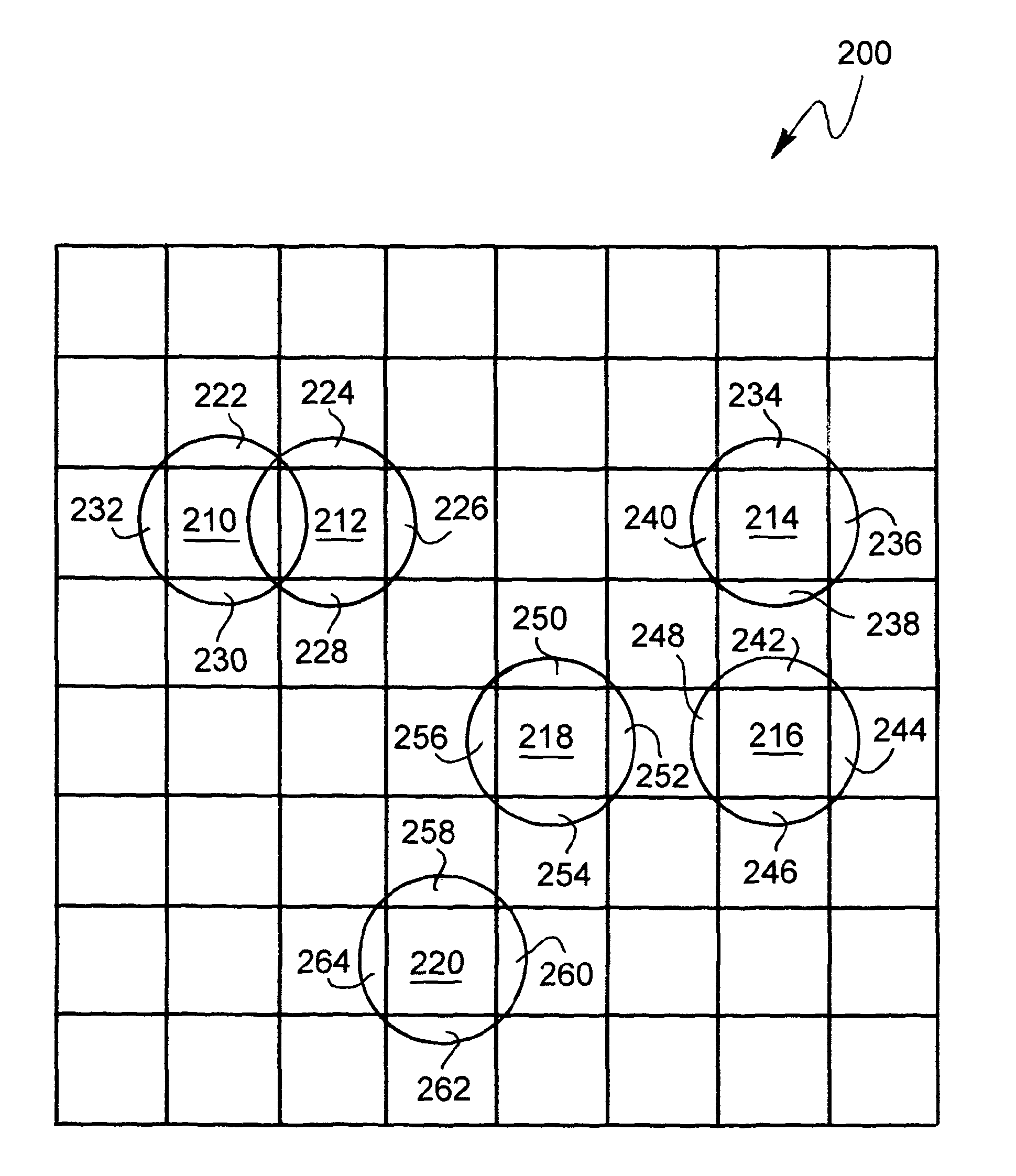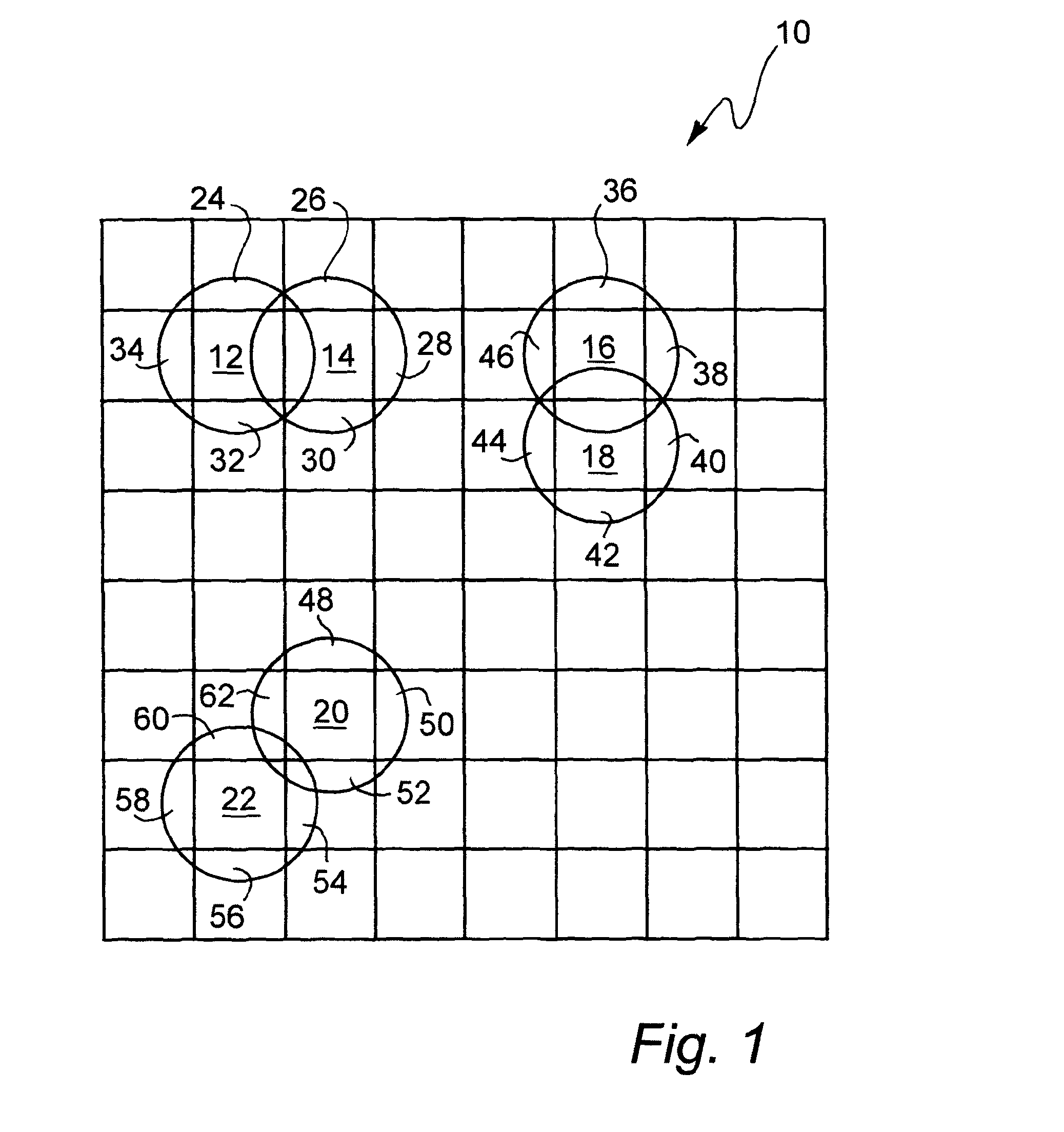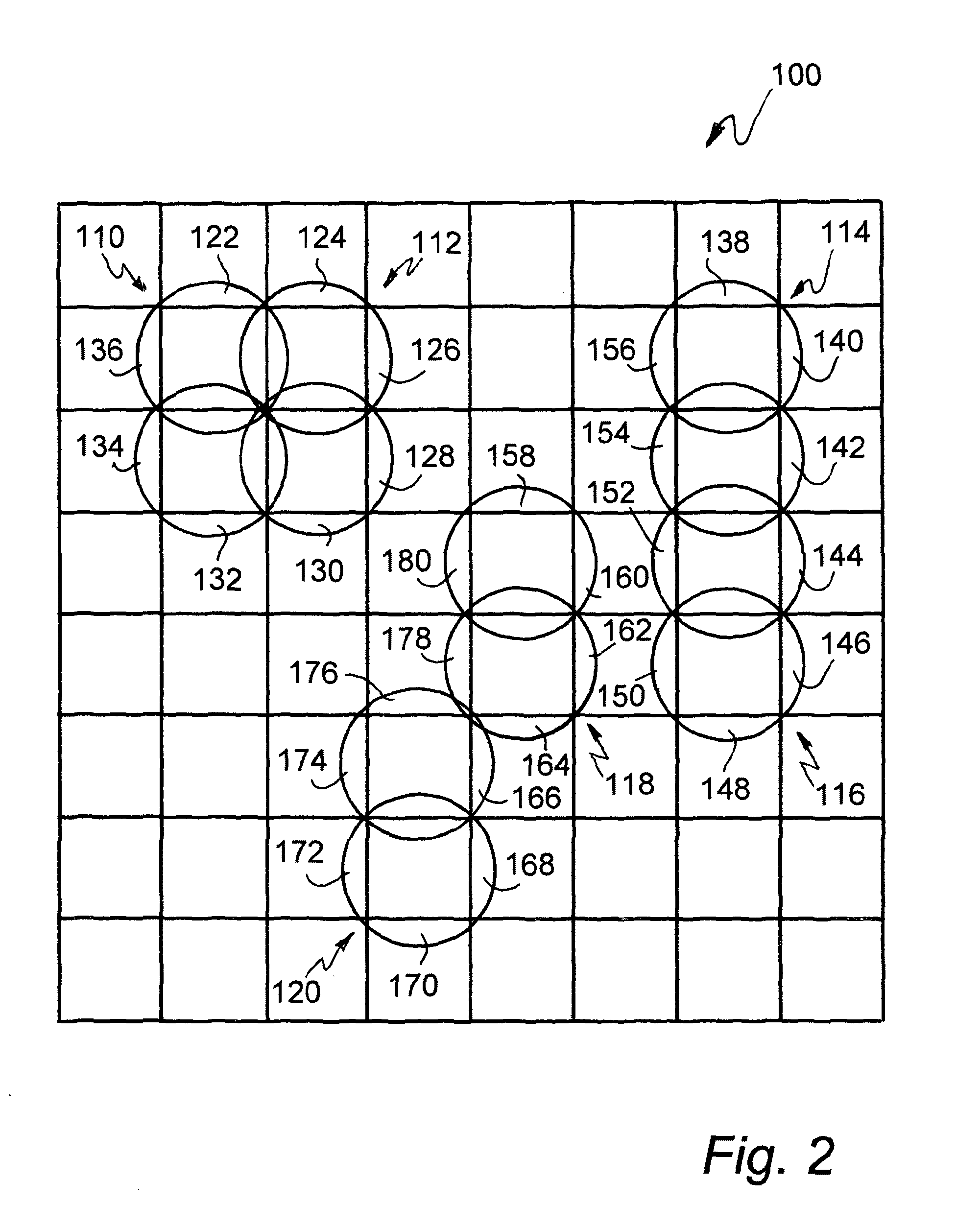Generating 1-bit image data from multiple-bit image data for producing when printed a dot image with reduced dot gain and appearance of patterning caused by isolated diagonally adjacent pixels
a technology of image data and image data, applied in image data processing, instruments, electrical equipment, etc., can solve the problems of many output devices not being able to reliably mark an isolated pixel and image patterning, and achieve the effect of reliable printing and small appearance of patterning
- Summary
- Abstract
- Description
- Claims
- Application Information
AI Technical Summary
Benefits of technology
Problems solved by technology
Method used
Image
Examples
Embodiment Construction
[0057]FIG. 6 shows a computer process 700 that is executed by a computer program in accordance with the invention. The computer process comprises first and second steps 710 and 720 respectively.
[0058]The first step comprises receiving multiple-bit image data in the form of 8-bit continuous tone raster image data. The image data comprise an array of X*Y pixel values in the range 0 to 255.
[0059]The second step 720 is shown in FIG. 7 and comprises the operations of receiving 730 values defining the sizes of full-sized and reduced-sized dots that are to be used to produce an image using the computer program, receiving 740 instructions as to whether reduced-sized dots or full-sized dots are to be used in portions of the image of which the densities of dots are low, receiving 750 instructions as to whether pixels are to be marked between reduced-sized dots to join horizontally and vertically adjacent reduced-sized dots in portions of the image of which the densities of dots are low, if no...
PUM
 Login to View More
Login to View More Abstract
Description
Claims
Application Information
 Login to View More
Login to View More - R&D
- Intellectual Property
- Life Sciences
- Materials
- Tech Scout
- Unparalleled Data Quality
- Higher Quality Content
- 60% Fewer Hallucinations
Browse by: Latest US Patents, China's latest patents, Technical Efficacy Thesaurus, Application Domain, Technology Topic, Popular Technical Reports.
© 2025 PatSnap. All rights reserved.Legal|Privacy policy|Modern Slavery Act Transparency Statement|Sitemap|About US| Contact US: help@patsnap.com



